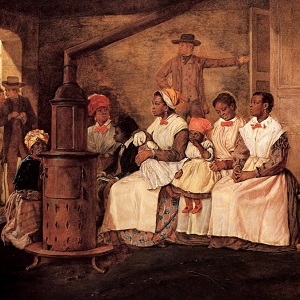Created by Petra Riviere
Adapted from Prof. Laura A. Hymson high school curriculum
NYS Common Core Grades 7 & 8:
History of the United States and New York
The Lemmon Slave Case provides students of U.S. history a window into the legal challenges and moral conflicts over slavery before the Civil War. This case requires a close examination of federal and state law. The New York courts freed slaves brought into the free state, while the United States Supreme Court decided Dred Scott was not free though he had traveled to a free state with his master’s family. Many curricula place a strong emphasis on the Dred Scott decision, but the Lemmon case shifts focus to New York and allows students to contemplate state’s rights implications and the interpretation of the law through a lens of human equality.
This lesson plan meets the following guidelines of New York State’s Common Core Social Studies Framework (2017):
Lesson Plan PDF
This lesson plan is based on a lesson plan for high schoolers available here.
The Historical Society’s website contains a wealth of related resources, including mini-biographies of the lawyers and judges involved in the case.
The Superior Court Judgment
The Lemmon Slave Case
Judicial Notice Article
Louis Napoleon
Conductor on the Underground Railroad
Chester Arthur
Lawyer for the Slaves
John Jay
Lawyer for the Slaves
Erastus Culver
Lawyer for the Slaves
Henry Lapaugh
Lawyer for the Lemmons
Elijah Paine
Superior Court Judge
Appeals to the Court of Appeals
William Evarts
Lawyer for New York
Charles O’Conor
Lawyer for the Lemmons
Samuel Foot
Former Court of Appeals Judge
William Wright
Court of Appeals Judge, Affirmed
Hiram Denio
Court of Appeals Judge, Affirmed
Thomas Clerke
Court of Appeals Judge, Dissented
George Comstock
Court of Appeals Judge, Dissented
Samuel Selden
Court of Appeals Judge, Dissented
Image Citation: Eyre Crowe, Slaves Waiting for Sale, Richmond, Virginia, 1861, via University of Virginia, The Atlantic Slave Trade and Slave Life in the Americas.

